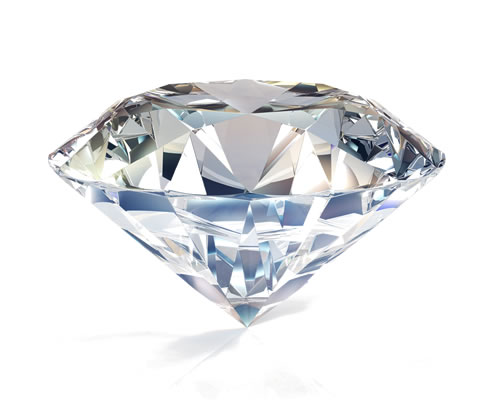We don’t buy new diamonds online – and neither should you!
Never buy a new diamond unseen. Well we would say that wouldn’t we? 😉
But here’s why…
It’s pretty easy these days to buy a loose diamond online. On the face of it, it can look like a real bargain (although if you’re buying from overseas, don’t forget to factor in currency conversion and import taxes) and of course they all come with certification now. So you can’t go wrong…. can you?
The problem is that with certificates being issued by different companies all over the place, standards can differ greatly. One certificate’s F colour may not be the same as another’s. The strictest diamond grading standards are carried out by GIA – but these are generally the more expensive stones because of it.
The biggest concern with buying a diamond unseen is knowing where the inclusions are. Will it fracture when it’s set into a ring?
One of our engagement ring clients bought his diamond online. Not only was it not cut very well but, on closer inspection, it turned out that there was an inclusion right on the corner making it susceptible to fracture. We set the stone successfully but needed to warn the client that it was at his own risk.
1.5ct diamond with inclusionA year or so later, the diamond did chip but on a different corner to the one we were worried about. It was because the girdle (the diamond’s outermost edge) was too thin.
So a poorly cut diamond is also a concern: Too deep and they won’t spread as much – a carat stone might only look like a 0.90ct stone for example – and the angles of the cut have to be right to get the optimum sparkle.
So do we all need to buy GIA certified diamonds then?
 No. And in fact when I first became a jeweller, diamond certification wasn’t common at all. You can still buy very good uncertified diamonds for a lot less than a certified diamond. If you still need piece of mind, all you do is take your finished jewellery to an independent valuer to verify that it is what it’s supposed to be.
No. And in fact when I first became a jeweller, diamond certification wasn’t common at all. You can still buy very good uncertified diamonds for a lot less than a certified diamond. If you still need piece of mind, all you do is take your finished jewellery to an independent valuer to verify that it is what it’s supposed to be.
When I’m looking for a diamond, I get 3 or 4 stones of various certification and grading to look at and compare them in reality – not on paper. Only then can you really see what a diamond has to offer and sometimes the non GIA certified diamond offers the best value for money.
And sometimes even GIA certified stones also don’t quite stack up to closer inspection. The amazing looking 1.5ct GIA certified diamond in the photo above for example turned out to have a big inclusion right across the top and I questioned whether the Si1 grading for clarity was in fact correct.
When we invite a client to choose between stones, more often than not, they don’t choose the largest; they go for one that has the most sparkle – and that’s not something you can see on a certificate.
Whilst we’re happy to set any good quality diamonds that a client brings in which they have sourced elsewhere, there are certain stones we won’t touch with a barge pole! Recently, somebody brought in a 2ct diamond that they had bought very cheaply overseas. On immediate inspection it became very clear why the stone was such a billy bargain! It was laser filled with resin and the certificate said “do not apply heat”. It was the worst stone I’d ever seen and would likely have disintegrated under any sort of pressure from trying to set it!
Such diamonds are known as “clarity enhanced” or “fracture filled” (another method of artifical enhancement) and cannot be considered as being natural diamonds. If you’re unsure, look out for the abbreviation “CE” on any accompanying description.
If you’re considering buying a diamond, do phone me for a chat on 0411275579 and I can talk you through the process of what to look out for to make it all seem a lot less scary!
UPDATE: A customer recently told us that he had been offered 30% discount by a local jeweller’s if he agreed to buy a diamond unseen. What do you think that says about the diamonds they are trying to get rid of?

